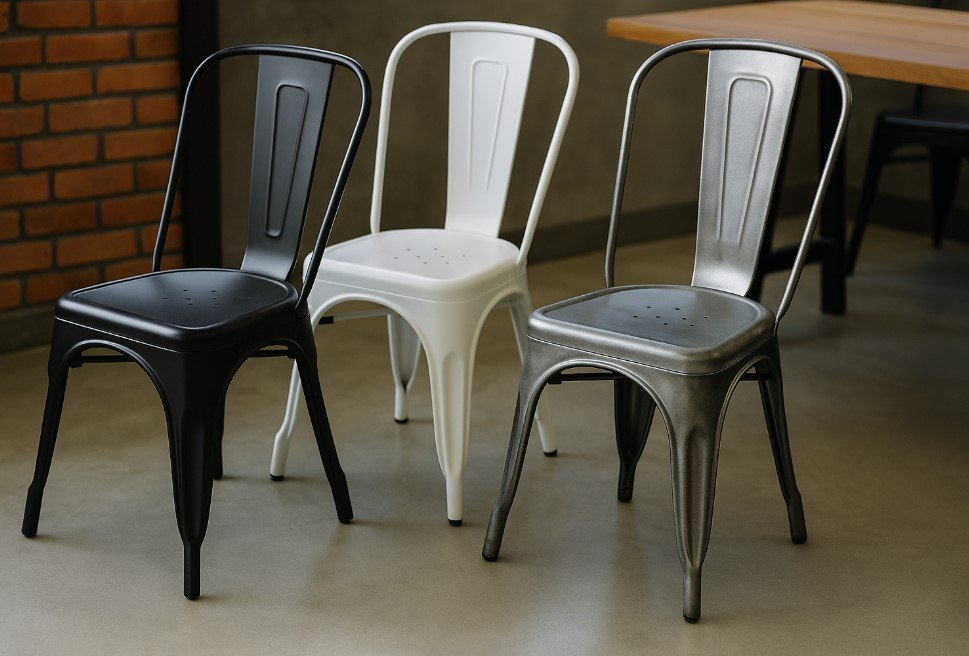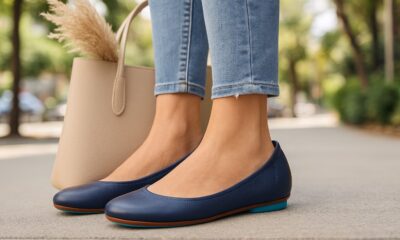Home Improvement
Why Interior Designers Are Loving Industrial Metal Chair Types?

Industrial design has long been celebrated for its raw authenticity. Rooted in the aesthetics of factories and warehouses, it embraces exposed structures, unrefined finishes, and materials that withstand time. Among its most beloved features are industrial metal chairs—pieces that combine strength with understated style. Interior designers are increasingly turning to these chairs for their versatility, durability, and ability to transform spaces with character. Whether used in dining rooms, offices, or outdoor patios, they have become a symbol of modern living with an edge of nostalgia.
The Allure of Industrial Style
Industrial interiors emerged from necessity during the mid-20th century, when old factories were repurposed into lofts and studios. Exposed beams, brick walls, and utilitarian furnishings defined the style. Today, this aesthetic has evolved into a deliberate design choice, admired for its honesty and simplicity.
Industrial metal chairs embody these principles perfectly. They strip away excess ornamentation, relying instead on clean lines and durable materials. Their raw finishes—brushed steel, matte black, or distressed metal—carry a sense of history while fitting seamlessly into contemporary interiors. For designers, this fusion of heritage and modernity is irresistible.
Durability Meets Design
One of the strongest appeals of industrial metal chairs is their durability. Unlike wood or plastic, which can warp or weaken over time, metal offers longevity and resilience. These chairs withstand daily wear, making them ideal for high-traffic environments like restaurants, cafés, and open-plan homes.
Designers love them not only for their sturdiness but also for their sculptural qualities. The simplicity of bent steel frames or the angularity of powder-coated structures adds architectural interest to any space. In kitchens, they complement stone countertops; in living areas, they contrast beautifully with plush textiles. Strength and design coalesce into furniture that is both practical and visually compelling.
Versatility Across Interiors
Despite their industrial roots, metal chairs adapt easily across styles. In minimalist interiors, they serve as quiet companions to sleek furniture. In rustic spaces, they offset the warmth of wood with remarkable restraint. Even in eclectic designs, they anchor the room with stability and balance.
Their versatility extends outdoors as well. Weather-resistant finishes allow them to thrive on patios, balconies, and garden dining sets. Designers often recommend industrial metal chairs for transitional spaces that flow between indoors and outdoors, ensuring continuity in style without compromising function.
The Power of Texture and Finish
What makes industrial chairs truly captivating is the variety of finishes available. Brushed steel exudes modern elegance. Distressed iron recalls vintage charm. Matte black offers sophistication, while galvanized coatings resist weathering.
Interior designers use these finishes strategically. A polished metal chair might highlight a kitchen’s contemporary edge, while a distressed version softens the austerity of a modern loft. Texture becomes a design language, adding depth and dimension to interiors that might otherwise feel flat.
Comfort Without Compromise
Industrial furniture is often criticized as cold or uncomfortable, but modern interpretations of metal chairs have addressed this perception. Contoured seats, ergonomic curves, and cushioned options provide comfort without diluting the raw appeal of the design.
Designers frequently pair them with leather or linen seat pads, blending tactile warmth with metal strength. This marriage of comfort and industrial edge broadens their appeal, making them suitable not only for casual dining but also for long hours of use in workspaces or studios.
A Sustainable Choice
As sustainability becomes central to interior design, industrial metal chairs stand out as eco-conscious choices. Metal is recyclable and often sourced from repurposed materials. Many designs embrace the ethos of reuse, giving new life to salvaged steel or iron.
For environmentally mindful homeowners and designers, choosing metal chairs means investing in pieces that will last for decades while reducing waste. This aligns perfectly with the broader movement toward responsible consumption in modern design.
Balancing Industrial with Other Styles
Interior designers often rely on industrial metal chairs to balance contrasting aesthetics. In Scandinavian interiors, they temper the softness of pale wood and natural textiles. In mid-century spaces, they echo the emphasis on clean lines and functionality. In contemporary homes, they add grit and character to otherwise polished surfaces.
This ability to harmonize with diverse styles makes them indispensable. They neither dominate nor disappear but strike a balance that enhances the overall design narrative. Their adaptability ensures they remain relevant, regardless of changing trends.
Iconic Forms That Inspire
Several designs have achieved near-icon status in the world of industrial chairs. Tolix chairs, with their sleek metal frames and timeless silhouette, are a favorite in cafés worldwide. Metal bar stools with adjustable heights pay homage to workshop seating, while stacking metal chairs echo the efficiency of factory floors.
These iconic forms have been reinterpreted countless times, offering endless opportunities for personalization. Designers draw inspiration from these classics while tailoring their use to fit contemporary spaces. Each chair becomes not just furniture but a conversation piece.
The Role of Metal Chairs in Open-Plan Living
Open-plan layouts dominate modern design, blending kitchens, dining, and living areas into fluid spaces. Industrial metal chairs thrive in this environment. Their slim frames and clean outlines maintain visual continuity, while their sturdiness supports frequent, multifunctional use.
Placed around dining tables, at kitchen islands, or as occasional seating, they unify open spaces. Designers often use them in repetition, creating rhythm and consistency that prevent sprawling layouts from feeling disjointed. Their presence lends both structure and character to expansive interiors.
Outdoor Applications and Urban Appeal
Urban living has amplified the demand for versatile outdoor seating. Industrial metal chairs excel here, combining weather resistance with aesthetic appeal. Powder-coated finishes protect against rust, while stackable designs save space in compact balconies or courtyards.
In urban cafés and rooftop terraces, they embody the grit and vibrancy of city life. Their utilitarian origins resonate in these environments, making them feel authentic and stylish simultaneously. Designers value their practicality as much as their ability to capture the pulse of urban culture.
Why Interior Designers Keep Recommending Them
The resurgence of industrial metal chairs is not just a passing trend. They continue to win favor among designers because they represent a rare blend of qualities: durability, adaptability, sustainability, and timeless style. They anchor rooms without overwhelming them, provide comfort without compromise, and elevate design without excessive ornamentation.
For homeowners and commercial clients alike, they offer reliability and style in equal measure. From rustic lofts to polished urban kitchens, their presence is unmistakable. Designers return to them again and again, confident in their ability to deliver both form and function.
Conclusion
Industrial metal chairs are more than utilitarian seating. They are icons of resilience, adaptability, and design authenticity. By weaving together durability, texture, and timeless appeal, they enrich contemporary spaces with character and charm. Interior designers love them because they transcend boundaries, thriving in diverse environments while honoring their industrial heritage.
For those seeking a balance of practicality and style, the enduring appeal of Metal Chairs ensures they will remain a cornerstone of design for years to come.
Check out: How to Disassemble a Recliner Chair: Step-by-Step Guide
-

 Tech1 month ago
Tech1 month agoSora 2 Invite Code: How to Get One (Step-by-Step Guide)
-

 Fashion2 months ago
Fashion2 months agoThe Ultimate Shoe for Moms on the Go: Tieks Ballet Flats
-

 Fashion2 months ago
Fashion2 months agoHow to Create a Modern Royalty Outfit for Any Occasion
-

 Tech2 months ago
Tech2 months agoTop Benefits of Mobile Threat Defense for Corporate Security






